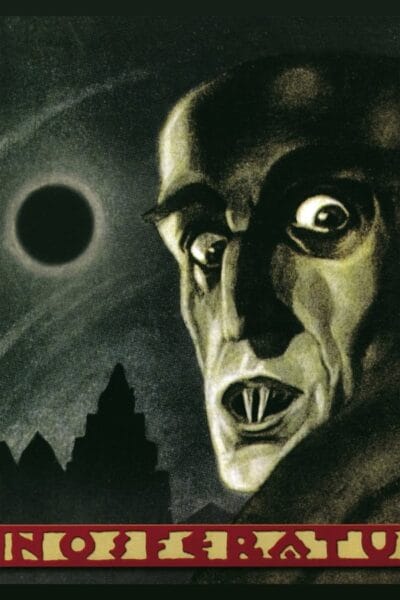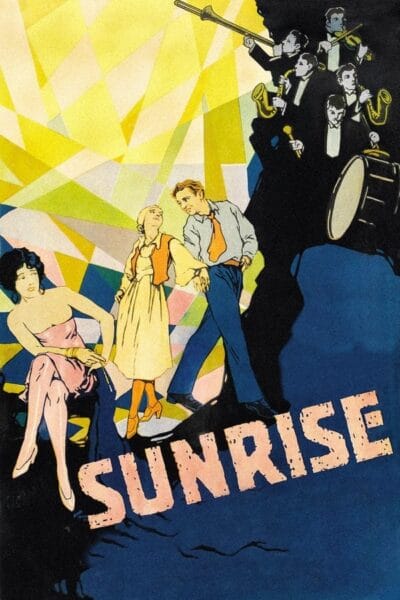Friedrich Wilhelm Murnau, known as F. W. Murnau, was a pioneering German film director who significantly influenced the cinematic landscape during the early 20th century. His innovative approach to storytelling, visual style, and groundbreaking techniques laid the foundation for the evolution of cinema. Murnau’s work transcended cultural boundaries, leaving an indelible mark on filmmakers and audiences alike.
Born in 1888, Murnau grew up in a time when cinema was in its infancy. Despite the limitations of the medium during his era, Murnau was relentless in pushing the boundaries of what was possible in film. He was a visionary, an artist who sought to create a new language to express human emotions, thoughts, and experiences through the medium of film.
In this article, we will explore the life and career of F. W. Murnau, delving into his groundbreaking films and techniques, examining his influence on the evolution of cinema, and celebrating his lasting legacy. This journey will take us through his early life, his work in German Expressionism, his impact on horror cinema, and his collaborations with other influential filmmakers of his time.
Early life and career of F. W. Murnau

F. W. Murnau was born in Bielefeld, Germany, in 1888. He began his artistic journey as an actor, performing in various stage productions before enrolling at the University of Heidelberg to study art history and literature. Murnau’s interest in the world of cinema was ignited during his time at university, where he became fascinated with the potential of film as a new form of artistic expression.
Murnau’s initial foray into filmmaking was through screenwriting, and he made his directorial debut in 1919 with the film The Boy in Blue. Although this film was met with limited success, it marked the beginning of Murnau’s prolific career as a director. Over the next decade, he would direct a string of influential films that would not only establish him as one of the leading filmmakers of his time but also help shape the future of cinema.
During the early years of his career, Murnau worked primarily within the German film industry, which was thriving in the wake of World War I. The political and social upheaval of the era provided fertile ground for innovative and experimental filmmaking. Murnau’s work during this period was heavily influenced by the German Expressionist movement, which sought to convey emotion and psychological states through heightened visual style and unconventional storytelling.
Murnau’s groundbreaking films and techniques
F. W. Murnau’s filmography is filled with groundbreaking work that pushed the boundaries of what was possible in cinema. Some of his most notable films include Nosferatu (1922), The Last Laugh (1924), Faust (1926), and Sunrise: A Song of Two Humans (1927). These films showcased Murnau’s innovative approach to storytelling, his mastery of visual language, and his willingness to experiment with new techniques.
One of Murnau’s most significant contributions to cinema was his use of the “unchained” camera. This technique involved moving the camera freely throughout a scene, allowing for dynamic and fluid shots that captured the essence of the story. The unchained camera was a radical departure from the static, stationary cameras that were common at the time and opened up a world of possibilities for visual storytelling.
In addition to his innovative camera work, Murnau was also known for his unique approach to lighting and set design. He used light and shadow to create mood and atmosphere, often employing chiaroscuro techniques to emphasize the emotional undercurrents of a scene. Murnau’s set designs were equally groundbreaking, with many of his films featuring elaborate, stylized sets that added an otherworldly quality to his work.
Influence of German Expressionism on Murnau’s work

German Expressionism was a significant influence on F. W. Murnau’s work, particularly during the early years of his career. This artistic movement, which emerged in the wake of World War I, sought to convey emotion and psychological states through heightened visual style and unconventional storytelling. Murnau was drawn to the bold, experimental nature of German Expressionist cinema and eagerly embraced its aesthetic principles in his work.
One of the most striking examples of Murnau’s Expressionist sensibilities can be found in his 1922 film Nosferatu, a loose adaptation of Bram Stoker’s Dracula. The film’s visual style is characterized by distorted perspectives, exaggerated shadows, and unsettling imagery that evokes a sense of dread and unease. This approach to visual storytelling was a significant departure from the more conventional, realistic films of the time and helped establish Murnau as a pioneer of avant-garde cinema.
Murnau’s Expressionist leanings can also be seen in his 1924 film The Last Laugh, which tells the story of a hotel doorman who is demoted to a bathroom attendant. The film employs a highly stylized visual language, using distorted camera angles, elaborate set designs, and dramatic lighting to convey the protagonist’s emotional turmoil. This innovative approach to storytelling set a new standard for cinema and demonstrated Murnau’s commitment to pushing the boundaries of the medium.
F. W. Murnau’s impact on horror cinema
F. W. Murnau is often considered a founding father of horror cinema, thanks in large part to his 1922 masterpiece, Nosferatu. This chilling adaptation of Bram Stoker’s Dracula is widely regarded as one of the first true horror films and has had a lasting impact on the genre. Murnau’s innovative approach to storytelling and visual style helped establish the conventions of horror cinema and laid the groundwork for countless filmmakers who followed in his footsteps.
Nosferatu is notable not only for its groundbreaking visual style but also for its innovative approach to horror storytelling. Murnau’s film was one of the first to explore the psychological dimensions of horror, using atmosphere and mood to create a sense of dread and unease. This approach to horror storytelling has become a hallmark of the genre and can be seen in the work of countless filmmakers, from Alfred Hitchcock to contemporary auteurs like Jordan Peele and Ari Aster.
Murnau’s influence on horror cinema can also be seen in his 1926 film Faust, which tells the story of a man who sells his soul to the devil in exchange for knowledge and power. Like Nosferatu, Faust employs a highly stylized visual language and unsettling imagery to create a sense of unease and terror. This approach to horror filmmaking has had a lasting impact on the genre and continues to shape the work of contemporary filmmakers.
The evolution of silent films and Murnau’s role

F. W. Murnau played a crucial role in the evolution of silent films, which were the dominant form of cinema during his career. As a filmmaker, Murnau was committed to exploring the unique possibilities of the silent medium, using innovative techniques and visual language to tell compelling stories without the use of dialogue.
One of Murnau’s most notable contributions to silent cinema was his development of the “unchained” camera, which allowed for dynamic, fluid shots that captured the essence of a scene. This innovation opened up new possibilities for visual storytelling, enabling filmmakers to convey emotion and narrative in ways that were not possible with static, stationary cameras.
Murnau’s mastery of visual storytelling can be seen in his 1927 film Sunrise: A Song of Two Humans, which tells the story of a man who is torn between his love for his wife and his infatuation with a woman from the city. The film is notable for its innovative use of montage, which Murnau uses to create a sense of emotional and psychological depth. This approach to storytelling helped elevate the silent film to new heights of artistic expression and demonstrated the potential of cinema as a medium for complex, nuanced storytelling.
Collaborations with other influential filmmakers
Throughout his career, F. W. Murnau collaborated with a number of other influential filmmakers and artists, who played a significant role in shaping his work. One of his most notable collaborators was screenwriter Carl Mayer, who co-wrote several of Murnau’s films, including Nosferatu, The Last Laugh, and Sunrise: A Song of Two Humans. Mayer’s innovative approach to storytelling and his commitment to exploringthe psychological dimensions of characters were a perfect match for Murnau’s visual style, and their partnership helped define the language of cinema during the silent era.
Murnau also collaborated with the legendary cinematographer Karl Freund, who worked on several of his films, including The Last Laugh and The Road to Yesterday. Freund’s innovative camera work and lighting techniques helped elevate Murnau’s films to new heights of visual expression and helped establish him as one of the leading filmmakers of his time.
Another notable collaboration in Murnau’s career was with the actress Emil Jannings, who starred in several of his films, including The Last Laugh, Faust, and Tartuffe. Jannings’ powerful performances helped bring Murnau’s characters to life, and their partnership helped establish the conventions of silent film acting.
Murnau’s influence on contemporary cinema

F. W. Murnau’s impact on cinema extends far beyond his era, and his influence can be seen in the work of countless contemporary filmmakers. Murnau’s innovative approach to visual storytelling, his commitment to exploring the psychological dimensions of characters, and his groundbreaking techniques have had a lasting impact on the medium of film.
One of the most notable examples of Murnau’s influence is in the work of German filmmaker Werner Herzog, who directed a 1979 remake of Nosferatu. Herzog’s film is a tribute to Murnau’s masterpiece, and it pays homage to the visual style and innovative storytelling techniques that made the original film a classic of horror cinema.
Murnau’s impact on contemporary cinema can also be seen in the work of filmmakers like David Lynch, who has cited Murnau as a major influence on his work. Lynch’s films often feature surreal imagery and unconventional storytelling techniques, which can be traced back to Murnau’s pioneering approach to visual storytelling.
The lasting legacy of F. W. Murnau
F. W. Murnau’s legacy as a filmmaker is one of innovation, experimentation, and artistic expression. His work helped establish the language of cinema during the silent era, and his influence can still be felt in the medium today. Murnau’s commitment to pushing the boundaries of what was possible in film helped pave the way for countless filmmakers who followed in his footsteps.
Murnau’s lasting legacy can be seen in the awards and accolades that he received during his career, including an Academy Award for Sunrise: A Song of Two Humans. He is also remembered through the preservation of his films, which continue to be celebrated and studied by scholars and filmmakers around the world.
F. W. Murnau was a groundbreaking filmmaker whose work helped shape the evolution of cinema during the early 20th century. His innovative approach to storytelling, visual style, and techniques laid the foundation for the medium, and his impact can still be felt in the work of contemporary filmmakers. Murnau’s legacy as a pioneer of avant-garde cinema is a testament to his commitment to artistic expression and his unwavering dedication to pushing the boundaries of what was possible in film.
As we continue to explore the world of cinema, we can look back on the life and career of F. W. Murnau as a source of inspiration and a reminder of the power of artistic expression. His legacy lives on in the films that he created, and his impact on the medium will continue to be felt for generations to come.
